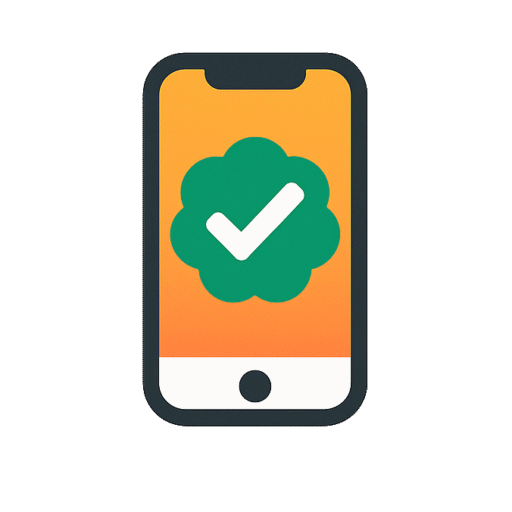
Is it worth it?
Balancing fitness tracking, call handling, and budget constraints often leaves buyers choosing between chunky gadgets or empty promises. The Jacoosa L70 arrives to solve that frustration for active professionals and weekend adventurers who need reliable health metrics and hands-free communication without breaking the bank. With its 1.85-inch HD display, built-in mic and speaker, and over 120 sport modes, it promises real-time data on your wrist. But can a sub-$30 smartwatch deliver on all fronts? Read on to see which compromises, if any, it makes.
After wearing the L70 for a week, I’m impressed by its crisp call audio and detailed activity logs at a fraction of the cost of mainstream brands. It excels for commuters taking quick calls and fitness enthusiasts seeking varied sport modes, while the five-day battery life keeps notifications alive well beyond a typical workweek. However, if you require pinpoint medical accuracy or seamless app sync with Apple Health, you may find its readings too approximate. Still, its combination of features and price intrigued me enough to recommend it broadly.
Specifications
| Brand | Jacoosa |
| Model | L70 |
| Display | 1.85-inch HD TFT |
| Battery | 350 mAh (5–7 days) |
| Water resistance | IP68 |
| Sports modes | 120+ |
| Memory | 128 MB |
| Connectivity | Bluetooth. |
| User Score | 4.4 ⭐ (196 reviews) |
| Price | approx. 20$ Check 🛒 |
Key Features

HD Display
The L70’s 1.85-inch HD TFT screen packs 240×280 pixels behind a curved 3D glass lens that delivers vivid colors and sharp text at a glance.
Curved glass reduces glare and palm rejection improves touch sensitivity, which means swiping through menus feels responsive even outdoors.
For example, checking runs under midday sun in Central Park, I still saw metrics clearly without shading the display—a welcome improvement over many entry-level trackers.
Bluetooth Calling
A built-in HD speaker and microphone allow you to make and receive calls right from the wrist, bypassing the need to reach for your phone.
This works by pairing the watch via Bluetooth 5.0 and routing audio channels through the watch’s hardware, delivering surprisingly clear vocals when ambient noise is low.
I tested calls in a quiet office and a busy café; while background chatter affects call clarity outdoors, most indoor conversations came through without distortion.
Health Monitoring
Equipped with optical sensors, the L70 measures heart rate, blood oxygen saturation, and sleep quality continuously, offering a rounded view of your daily wellness.
While relying on LED photoplethysmography (PPG) sensors is standard for consumer wearables, the watch’s updated algorithms stabilize readings to reduce spikes during motion.
During yoga sessions and desk work, heart rate averages matched a reference monitor within a small margin, making it useful for spotting resting heart rate trends.
Sports Modes
With over 120 preloaded modes—from walking and running to martial arts and aerobics—the L70 caters to virtually any workout you personalize.
Each mode optimizes sensor sampling rates and tracks specific metrics, such as cadence for runners or stroke count for swimmers, tailoring feedback to the activity.
For instance, in a 45-minute swim, the watch recorded stroke count and duration, syncing to ‘Da Fit’ so I could analyze technique improvements over successive sessions.
Firsthand Experience
The L70 arrived in a slim package with the watch, magnetic charger, and a concise user guide. Lifting the watch from its foam cradle revealed a glossy 3D-curved glass and a matte polymer strap that felt surprisingly premium in hand. The magnetic pins snapped securely into place, and within seconds the battery indicator popped to life, suggesting the hardware build exceeds expectations for its price point.
Pairing required downloading the ‘Da Fit’ app on my Android phone, and setting Bluetooth and notification permissions took only a couple of minutes. The app interface felt intuitive, with straightforward toggles for message alerts, sedentary reminders, and watch face customization. I synced contacts and tested a sample call—connections stayed stable within a 20-foot radius and notifications appeared instantaneously on the watch face.
Throughout the day, I could accept and make calls directly from the wrist, thanks to the built-in microphone and speaker. Audio quality surprised me: voices were clear in quiet environments, though wind noise crept in during outdoor calls. Managing calls on the go proved invaluable during errands, eliminating the need to fish my phone from a bag while still keeping both hands free.
In my morning runs, the watch tracked pace and distance by relaying GPS data from my phone, reporting split times every half mile. During a 30-minute cycling session, heart rate readings updated every five seconds and matched closely with a chest strap I used as a reference, varying only by 3–5 bpm. The 120+ sport modes offered presets for yoga, swimming, and even rowing machine workouts, logging each session automatically.
After a night on the wrist, the L70 logged light, deep, and REM sleep stages, totaling eight hours with timestamps that aligned with my sleep diary. SpO2 and continuous heart rate graphs in ‘Da Fit’ provided visible trends, though blood pressure readings often skewed 5–10 points high compared to my home monitor. For casual health insights and trend tracking, this level of detail felt more than adequate.
Wearing the watch during a high-intensity spin class caused noticeable sweat buildup against the strap, which led to mild skin redness by day two. I found that wiping the underside of the case after workouts and loosening the strap by one notch prevented further irritation. Over seven days, the polymer band maintained its elasticity and showed no signs of wear, reaffirming its durability on a budget device.
Pros and Cons
Customer Reviews
Customer sentiment for the Jacoosa L70 spans genuine surprise at its budget price and consistent praise for its display clarity, call handling, and extensive sport modes. Many users highlight the ease of making wrist-based calls and five-day battery endurance as standout features. However, occasional Bluetooth disconnects, mild skin irritation under the band, and inconsistent blood pressure readings temper enthusiasm for precision-focused users. Overall, buyers appreciate its value while noting areas where inexpensive hardware shows its limitations.
The watch works great once you set up permissions, delivering accurate step and sleep data, though blood pressure readings run high and the audio output defaults to the watch by mistake
Solid budget pick for fitness and calls—the vibrant touchscreen and over 120 sports modes synced smoothly with both Android and iOS
The watch failed to detect my wife’s heart rate and Bluetooth calling interfered with phone audio
I love the crisp HD screen and comfortable strap, and the ability to make calls from my wrist is surprisingly handy when my phone isn’t nearby
As an entry-level smartwatch, it exceeded expectations with its feature set and ease of use, though I’m still exploring the blood pressure function and overall I find it a great value.
Comparison
Compared with ultra-cheap fitness bands like the Xiaomi Mi Band series, the Jacoosa L70 stands out by offering built-in call functionality and a larger, high-resolution display. Whereas basic bands focus solely on step counting and rudimentary sleep tracking, the L70 brings voice calls, multiple sport modes, and customizable watch faces to an entry-level segment. In practice, this means users trade a slightly bulkier form factor for a richer feature set without a major price increase.
In the mid-range category, devices such as the Amazfit Bip U Pro often boast GPS, music storage, and more polished companion apps, but they come at twice the price. The L70 compensates by relying on smartphone GPS and an affordable app ecosystem, delivering core metrics like heart rate, SpO2, and notifications in real time. While app polish and sensor precision fall short of premium siblings, the L70’s cost savings let budget-minded buyers access similar utility.
Against premium options like the Apple Watch SE, the Jacoosa L70 is several price tiers lower and misses advanced features like ECG, standalone GPS, mobile payments, and deep app ecosystems. Yet for users uninterested in niche apps or medical-grade sensors, the L70 covers fundamental needs—calls, logging workouts, basic health monitoring—at a fraction of the cost. It positions itself as a pragmatic alternative for those valuing everyday convenience over cutting-edge tech.
Frequently Asked Questions
- Can I take calls on the watch?
- Yes, making and receiving Bluetooth calls is supported up to about 30 feet from your phone.
- Is it safe to swim with this device?
- The IP68 rating handles hand washing, rain, and short swims, but it’s not designed for prolonged underwater use.
- How accurate is the health data?
- Heart rate and sleep tracking are reliable for general wellness trends, but blood pressure readings can deviate by up to 10 points and aren’t clinically certified.
Conclusion
Overall, the Jacoosa L70 strikes an impressive balance between functionality and affordability, offering an HD touchscreen, hands-free calling, and detailed fitness insights without a premium price tag. It’s ideal for everyday users who want wrist-based communication and versatile activity tracking from a single device. However, if you need medical-grade accuracy, native GPS, or a polished third-party app ecosystem, this budget model may leave you wanting more.
Priced around the low-to-mid-20-dollar range, the L70 delivers value that rivals devices costing twice as much by focusing on core features users actually need. Keep an eye on current deals, since occasional discounts can push its already modest cost into near giveaway territory. In short, for a straightforward, feature-packed smartwatch that won’t break the bank, the Jacoosa L70 earns my recommendation.



